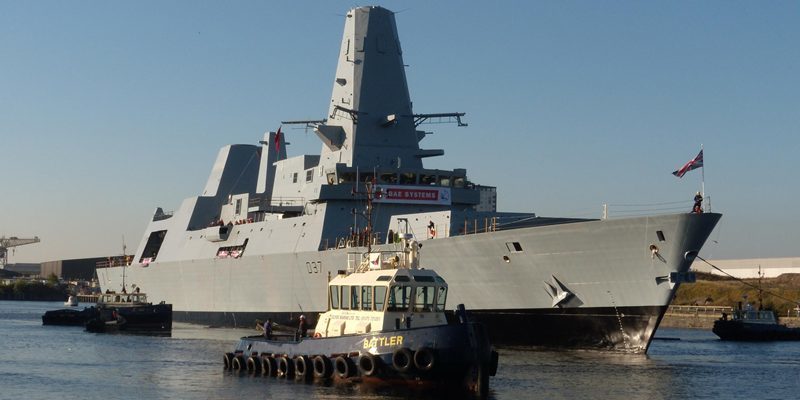A £1 billion warship named after Dundee’s naval hero Admiral Adam Duncan has been launched on the Clyde.
HMS Duncan is the sixth and last of the Royal Navy’s Type 45 destroyers, which are meant to protect the fleet by shooting down enemy aircraft and missiles.
It is only 60% complete and has still to be fitted out before undergoing extensive sea trials. It is not expected to be in operational service until 2014.
HMS Duncan’s official motto is “secundis dubusque rectus” which means upright in prosperity and peril.
That could hardly be more appropriate given that its launch comes as the Royal Navy braces itself to hear how much it will have to sacrifice as part of the Ministry of Defence’s contribution to government spending cuts.
There has been widespread speculation about the fate of the two new aircraft carriers and about how many escort ships destroyers and frigates the navy will be able to afford to keep running.
Despite the financial pressures, the MoD and the navy were keen to emphasise the positive as the £6 billion Type 45 project came a step closer to its conclusion.
Peter Luff, minister for defence equipment, support and technology, said, “The launch of Duncan is the culmination of a huge effort by workers here on the Clyde, across the country throughout the supply chain, and in the MoD, completing this class of potent warfighters of which everyone involved can be very proud.”
The 7500-tonne destroyer will be officially affiliated with Dundee throughout its service life.
The man it is named after led a British fleet to victory over the Dutch at the Battle of Camperdown on October 11, 1797.
In recognition of his success, he was made a viscount and his family owned the estate that is now Camperdown Park in the city.
One of the Royal Navy’s top officers, Commander-in-Chief Fleet Admiral Sir Trevor Soar joined the 14,000 people who watched HMS Duncan slide down the slipway into the river at BAE Systems’ Govan shipyard on Monday.
He said, “The Type 45 is world class. These ships are as versatile as they are powerful.
“Naturally, her war-fighting capability includes the ability to engage hostile forces using the Sea Viper missile system, her gun or other onboard weapon systems, while her ship’s company provide anything from boarding parties that deter and disrupt pirates, to landing ashore for the provision of humanitarian disaster relief.
“HMS Duncan can also deploy up to 60 Royal Marines Commandos and their equipment and operate a range of helicopters from her flight deck.
“These are fantastic ships and I look forward to HMS Duncan joining the fleet.”
Lord Provost John Letford was also present for the launch, representing Dundee along with a group of Sea Cadets and around 40 members of the Friends of Camperdown House, whose chairman James Crawford said it had been an “absolutely fabulous” day.
Alan Johnston, managing director of BAE Systems’ surface ships division, said, “Today’s launch marks the culmination of a hugely successful production phase on the Type 45 programme.
“The warships built at our yards, Clyde and in Portsmouth, are among the best in the world. We continue to invest in our people and facilities to ensure we retain this enviable reputation of British shipbuilding expertise and remain competitive for the long-term success of our business.”
The first Type 45, HMS Daring, entered operational service this summer. In what has become a Royal Navy tradition in recent years, all the ships in the class have names starting with D Dauntless, Diamond, Dragon and Defender being the others.
They are the largest and most powerful destroyers the UK has ever had and can sail 7000 nautical miles without refuelling.
